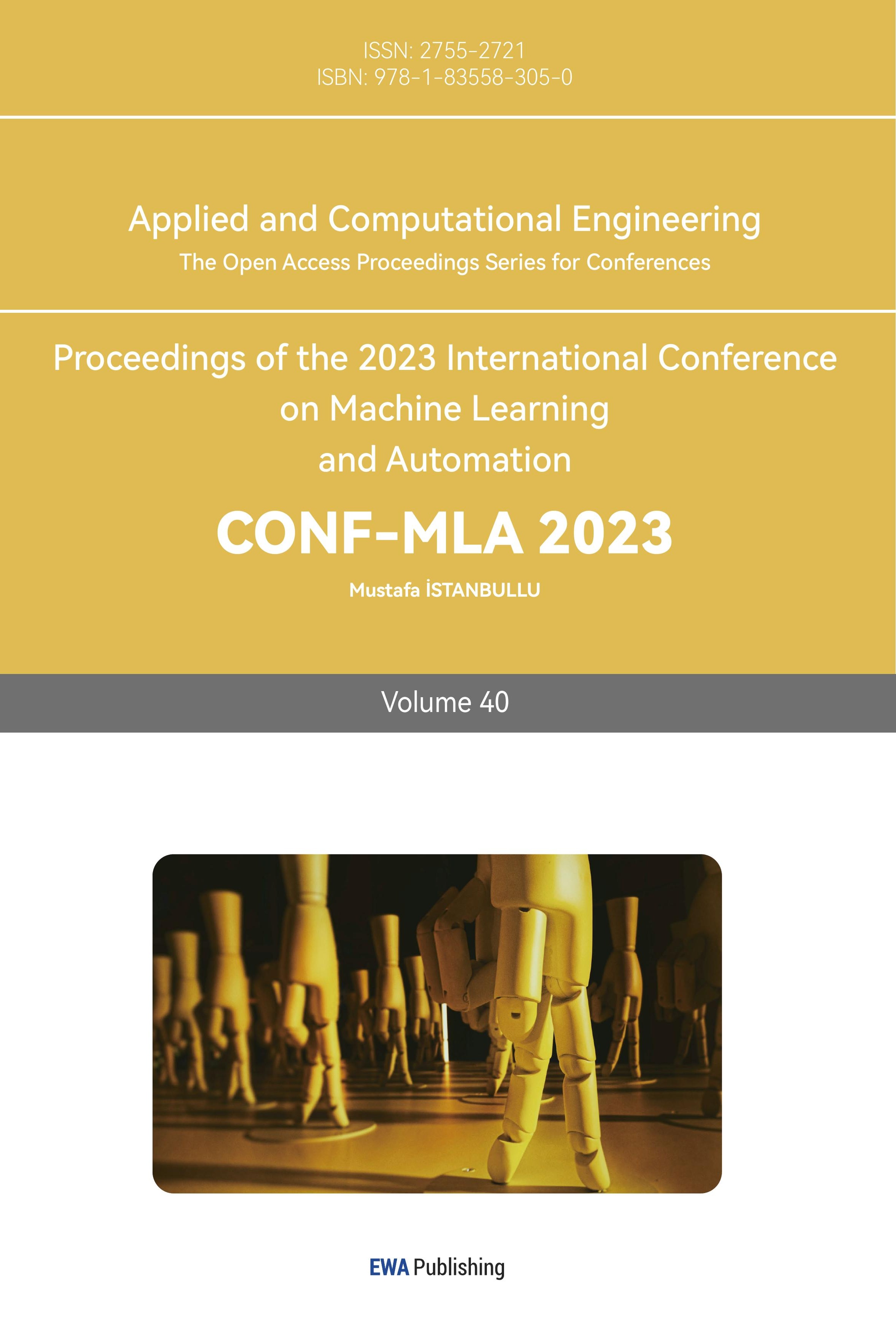References
[1]. World Health Organization 2023 Deafness and hearing loss https://www.who.int/news-room/fact-sheets/detail/deafness-and-hearing-loss.
[2]. Zhang Z 2018 Research on vision-based real-time dynamic gesture segmentation method (in Chinese) master thesis Henan University.
[3]. Wan K 2013 Research and Application of Gesture Recognition System (in Chinese) master thesis Guangdong University of Technology.
[4]. Qi B 2011 Research on gesture recognition algorithm based on dynamic fuzzy neural network (in Chinese) master thesis Southwest University.
[5]. Xu X 2018 Research on the method of dynamic gesture recognition based on 3D deep neural network (in Chinese) master thesis Xidian University.
[6]. Malassiotis S and Strintzis M G 2008 Real-time hand posture recognition using range data Image and Vision Computing p 1027-1037.
[7]. Marcel S 1999 Hand posture recognition in a body-face centered space CHI’99 Extended Abstracts on Human Factors in Computing Systems p 302-303.
[8]. Howard A G et al 2017 Mobilenets: Efficient convolutional neural networks for mobile vision applications arXiv preprint arXiv:1704.04861.
[9]. Sandler M et al 2018 Mobilenetv2: Inverted residuals and linear bottlenecks In Proceedings of the IEEE conference on computer vision and pattern recognition pp 4510-4520.
[10]. Srinivasu P N et al 2021 Classification of skin disease using deep learning neural networks with MobileNet V2 and LSTM Sensors 21(8) p 2852.
[11]. Qiu Y Wang J Jin Z et al 2022 Pose-guided matching based on deep learning for assessing quality of action on rehabilitation training Biomedical Signal Processing and Control 72: 103323.
[12]. Nair R R Singh T Basavapattana A Pawar M M 2022 Multi-layer, multi-modal medical image intelligent fusion Multimedia Tools and Applications 81(29) 42821-42847.
Cite this article
Gui,Y. (2024). Edge impulse-based convolutional neural network for Hand Posture Recognition. Applied and Computational Engineering,40,115-119.
Data availability
The datasets used and/or analyzed during the current study will be available from the authors upon reasonable request.
Disclaimer/Publisher's Note
The statements, opinions and data contained in all publications are solely those of the individual author(s) and contributor(s) and not of EWA Publishing and/or the editor(s). EWA Publishing and/or the editor(s) disclaim responsibility for any injury to people or property resulting from any ideas, methods, instructions or products referred to in the content.
About volume
Volume title: Proceedings of the 2023 International Conference on Machine Learning and Automation
© 2024 by the author(s). Licensee EWA Publishing, Oxford, UK. This article is an open access article distributed under the terms and
conditions of the Creative Commons Attribution (CC BY) license. Authors who
publish this series agree to the following terms:
1. Authors retain copyright and grant the series right of first publication with the work simultaneously licensed under a Creative Commons
Attribution License that allows others to share the work with an acknowledgment of the work's authorship and initial publication in this
series.
2. Authors are able to enter into separate, additional contractual arrangements for the non-exclusive distribution of the series's published
version of the work (e.g., post it to an institutional repository or publish it in a book), with an acknowledgment of its initial
publication in this series.
3. Authors are permitted and encouraged to post their work online (e.g., in institutional repositories or on their website) prior to and
during the submission process, as it can lead to productive exchanges, as well as earlier and greater citation of published work (See
Open access policy for details).
References
[1]. World Health Organization 2023 Deafness and hearing loss https://www.who.int/news-room/fact-sheets/detail/deafness-and-hearing-loss.
[2]. Zhang Z 2018 Research on vision-based real-time dynamic gesture segmentation method (in Chinese) master thesis Henan University.
[3]. Wan K 2013 Research and Application of Gesture Recognition System (in Chinese) master thesis Guangdong University of Technology.
[4]. Qi B 2011 Research on gesture recognition algorithm based on dynamic fuzzy neural network (in Chinese) master thesis Southwest University.
[5]. Xu X 2018 Research on the method of dynamic gesture recognition based on 3D deep neural network (in Chinese) master thesis Xidian University.
[6]. Malassiotis S and Strintzis M G 2008 Real-time hand posture recognition using range data Image and Vision Computing p 1027-1037.
[7]. Marcel S 1999 Hand posture recognition in a body-face centered space CHI’99 Extended Abstracts on Human Factors in Computing Systems p 302-303.
[8]. Howard A G et al 2017 Mobilenets: Efficient convolutional neural networks for mobile vision applications arXiv preprint arXiv:1704.04861.
[9]. Sandler M et al 2018 Mobilenetv2: Inverted residuals and linear bottlenecks In Proceedings of the IEEE conference on computer vision and pattern recognition pp 4510-4520.
[10]. Srinivasu P N et al 2021 Classification of skin disease using deep learning neural networks with MobileNet V2 and LSTM Sensors 21(8) p 2852.
[11]. Qiu Y Wang J Jin Z et al 2022 Pose-guided matching based on deep learning for assessing quality of action on rehabilitation training Biomedical Signal Processing and Control 72: 103323.
[12]. Nair R R Singh T Basavapattana A Pawar M M 2022 Multi-layer, multi-modal medical image intelligent fusion Multimedia Tools and Applications 81(29) 42821-42847.









